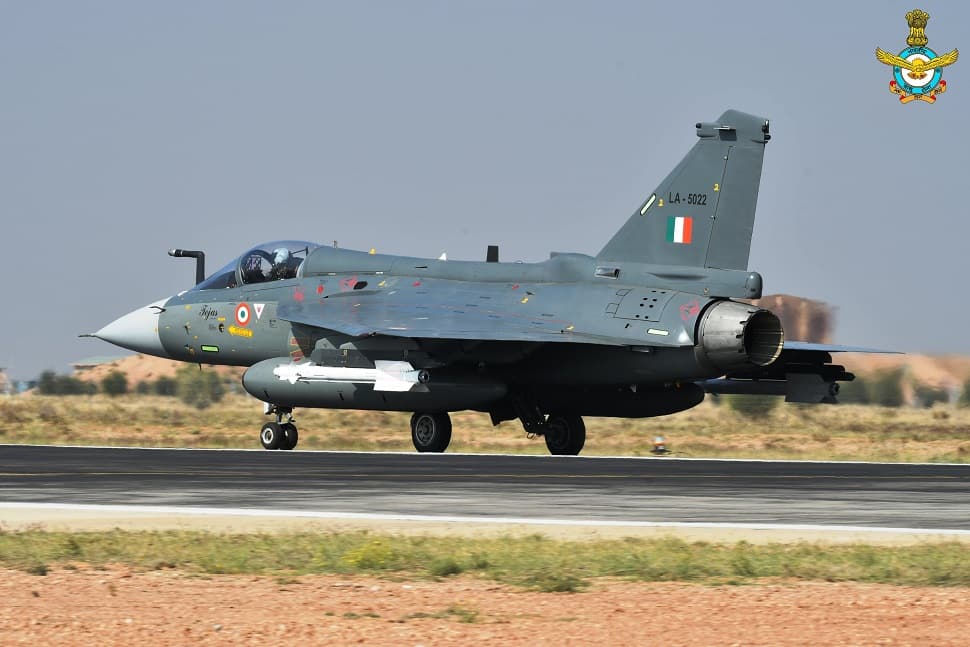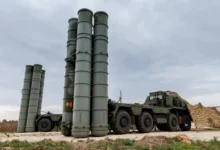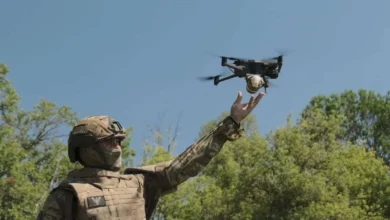LCA Tejas: Unhappy IAF Gets “New And Improved” Combat Fighters For Testing; Here’s How Tejas MK1A Is Better Than Its Predecessor MK1

- The R-73 has a range of 40 kilometres, while the Derby has a range of 50 kilometres and is a short-to-medium BVR missile.
- The Mk2 will be a medium-weight fighter (MWF) with a larger airframe and a higher maximum take-off weight of 17,500 kilogrammes, up from the LCA's 13,500 kilogrammes.
Hindustan Aeronautics Limited sources told The Indian Express that the LCA Tejas Mk 1A began its first flight trials in the first week of May. (HAL).
The LCA Mk1A is an improved version of the LCA Mk1, which reached Full Operational Capability (FOC) in 2020. It will be used as a testbed for the production line of Mk 1As.
The Indian Air Force (IAF) has 40 Tejas Mk1 planes in use right now. In January 2021, the IAF gave HAL a contract for 73 Tejas Mk1A fighter planes and 10 LCA Tejas Mk1 trainer planes worth $6.07 billion.
The contract says that HAL must deliver the first three planes in 2024 and 16 planes every year for the next five years.
HAL said that the test flights were part of the making of the plane, so they were kept secret. The HAL source told Janes, “We are working hard to make sure that the planes are delivered to the Indian Air Force (IAF) on time and as planned by 2024.”
Mk1A Vs. Mk1
It was said that the IAF did not like the LCA Mk1 because it did not meet its operational needs. So, the goal of the MK 1A programme is to improve the operational capabilities of the Tejas LCA based on what the IAF says.
The IAF said that the Mk1’s increased weight and slower speed, which hurt the plane’s performance, were two of its problems. The new Mk1A will have better composites to cut down on the weight of the airframe and more aerodynamic pylons to cut down on the drag at high speeds.
The LCA Mk1 was also not good at Electronic Warfare (EW), because the Radar Warning Receiver and Counter Measure Dispensing System didn’t work well (CMDS). The IAF wanted a Self Protection Jammer (SPJ) because they didn’t have enough Electronic Counter Measures (ECM).
In the Mk1A version, the problems with RWR and CMDS have been fixed, and the IAF’s ECM needs will be met by a pod-mounted active jammer.
Defense Research and Development Organization says that the Mk1A version will have an Active Electronically Scanned Array (AESA) radar called “Uttam” that can track 50 targets in the sky from more than 100 kilometres away and attack about four of them at the same time (DRDO).
Even though the first 16 Tejas Mk1As will have Israeli ELM 2052 AESA radars, the rest will have the Uttam radars that were made in India.
The Mk1 was armed with the Vympel R-73 short-range missile with infrared homing and the ‘Derby’ beyond-visual-range air-to-air missiles (BVR-AAM) made by Rafael Advanced Defence Systems in Israel.
The R-73 has a range of 40 kilometres, while the Derby has a range of 50 kilometres and is a short-to-medium BVR missile.
The new Tejas Mk1A can also be armed with the Advanced Short Range Air-to-Air Missile (ASRAAM), which is made in India and has a range of 25 kilometres, and the Astra BVR missile, which was also made in India and has a range of 80 to 110 kilometres. It can go at a speed of 4.5 Mach (almost hypersonic).
The Tejas Mk1A will also be able to fight wars with precision thanks to a digital moving map with 2D maps and a 3D perspective view, as well as provisions for GLONASS, the Indian Regional Navigation Satellite System (IRNSS), GAGAN (GPS-aided geo-augmented navigation), and SBAS (Satellite-based Augmentation system).
The Mk1A also has a probe for refuelling while in the air. This will greatly increase its operational range and allow the Tejas to stay in the air for much longer periods of time.
The New Tejas Mk2
HAL is also working on the Tejas Mk2, a new version of the Tejas that should be ready to fly by 2023.
The Mk2 will be a medium-weight fighter (MWF) with a larger airframe and a higher maximum take-off weight of 17,500 kilogrammes, up from the LCA’s 13,500 kilogrammes. The plane will have a longer fuselage, which will let it hold more fuel.
Also, the Tejas Mk2 will be powered by an improved General Electric (GE) F414-INS6 engine, which is more powerful than the GE F404 engine that powers the Mk1 and Mk1A versions.
The Mk2 will also be able to carry more weapons than the Mk1 and Mk1A, which could only carry about 4.35 tonnes of weapons.







Facebook Comments